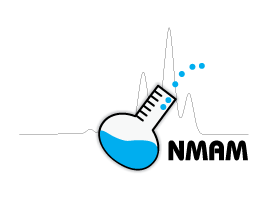Mercury

Overview
CAS No. 7439-97-6 (metal)
Mercury (Hg) is a naturally occurring metal. Metallic mercury is a shiny, silver-white, odorless liquid. When heated it becomes a colorless, odorless gas. Some of the health effects exposure to mercury may cause include: irritation to the eyes, skin, and stomach; cough, chest pain, or difficulty breathing, insomnia, irritability, indecision, headache, weakness or exhaustion, and weight loss. Workers may be harmed from exposure to mercury. The level of exposure depends upon the dose, duration, and work being done.
Mercury is used in many industries. It’s used to produce chlorine gas and caustic soda, and in thermometers, barometers, batteries , and electrical switches. Some examples of workers at risk of being exposed to mercury include the following:
- Workers in facilities where electrical equipment is manufactured
- Workers in fluorescent light bulb (CFL) recycling facilities
- Workers in facilities where automotive parts are manufactured
- Workers in chemical processing plants that use mercury
- Workers in medical, dental, or other health services who work with equipment that contains mercury
- Dentists and their assistants when breathing in mercury vapor released from amalgam fillings
NIOSH recommends that employers use Hierarchy of Controls to prevent injuries. If you work in an industry that uses mercury, please read chemical labels and the accompanying Safety Data Sheet for hazard information. Visit NIOSH’s page on Managing Chemical Safety in the Workplace to learn more about controlling chemical workplace exposures.
The following resources provide information about occupational exposure to mercury. Useful search terms for mercury include “colloidal mercury,” “mercury metal,” “metallic mercury,” and “quicksilver.”
NIOSH Chemical Resources
Related NIOSH Resources
- NIOSHTIC-2 search results on Mercury – NIOSHTIC-2 is a searchable database of worker safety and health publications, documents, grant reports, and journal articles supported in whole or in part by NIOSH.
- Mercury compounds [except (organo) alkyls] (as Hg). The immediately Dangerous to Life or Health Concentrations (IDLH) criteria and information sources used by NIOSH to determine immediately dangerous to life or health concentrations.
- Mercury (organo) alkyl compounds (as Hg). IDLH criteria and information sources used by NIOSH to determine immediately dangerous to life or health concentrations.
Selected Publications
- NIIOSH Emergency Response Card: Mercury The ERSH-DB contains accurate and concise information on high-priority chemical, biological and radiological agents that could be encountered by personnel responding to a terrorist event.
- NIOSH Hazard ID No. 6: Exposure to Mercury Vapor During the Use of Mercury Carburetor Synchronizers DHHS (NIOSH) Publication No. 99-111 (1999). Presents recommendations for prevention of exposure to Mercury by individuals service engines featuring multiple carburetors.
- NIOSH Criteria Documents: Criteria for a Recommended Standard: Occupational Exposure to Inorganic Mercury DHHS (NIOSH) Publication No. 73-11024 (1973). Contains a standard for mitigation of exposure to inorganic Mercury to prevent adverse effects over a working lifetime.
- Inorganic Mercury and Organic Mercury DHHS (NIOSH) Publication No. 81-123 (January 1981). Occupational Health Guidelines for Chemical Hazards
Related Resources
- Agency for Toxic Substances Disease Registry (ATSDR) Toxicological Profile for Mercury
- ATSDR Medical Management Guidelines (MMGs): Mercury
- ASTDR – ToxFAQs: Mercury
- EPA Chemistry Dashboard: Mercury
- EPA: Mercury Information
- EPA (Basic Information): Mercury
- EPA (Health Effects): Mercury
- EPA Acute Exposure Guideline Levels: Mercury Vapor
- EPA Integrated Risk Information System: Mercury (elemental)
- NLM (Haz-Map): Mercury
- OSHA Safety and Health Topics: Mercury
- OSHA (Hospital e-Tool): Mercury Spills
- OSHA (Healthcare Wide Hazards): Mercury
- OSHA Hazard Communication website
- New Jersey Hazardous Substance Fact Sheets: Mercury
International Resources
- Canadian Centre for Occupational Health and Safety: Mercury
- European Chemicals Agency (ECHA): Mercury
- ILO International Chemical Safety Card
- IPCS INCHEM search results on Mercury
- OECD Global Portal to Information on Chemical Substances
- WHO (CICAD 50): Inorganic Mercury
- WHO (Environmental Health Criteria 1): Mercury
- WHO – Mercury in Health Care
- Gestis Substance Database



